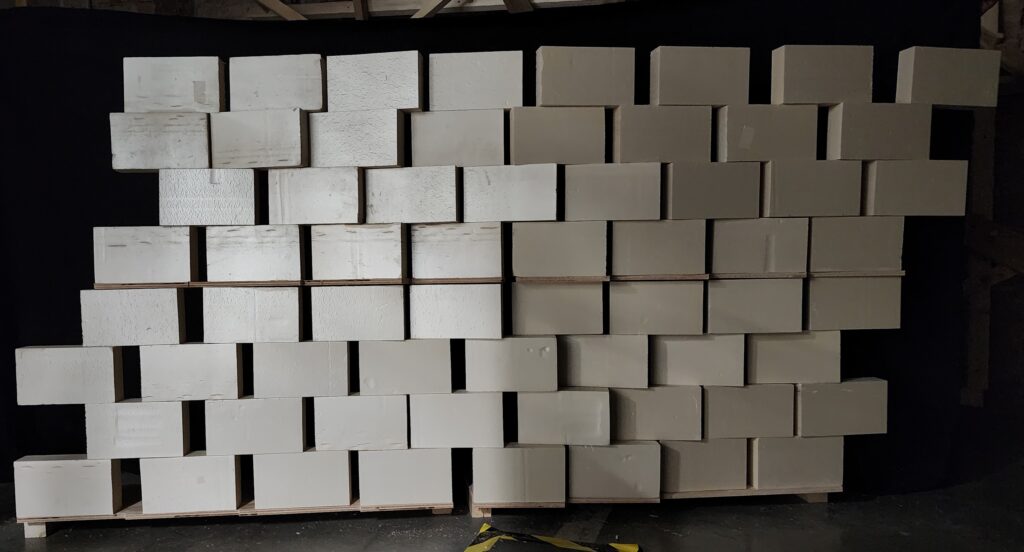whilst global temperatures are rising towards +4°c, building facades are a main contributors to the urban heat island effect within cities.2050 about 70 % of the world’s population will live in cities.The building sector globally consumes a significant amount of energy for heating and cooling. In fact, about half of the global cooling load is due to solar gains, which means that buildings need a lot of energy to stay cool during hot weather.
State of the Art
Centre Active Bricks, Technical university Munich
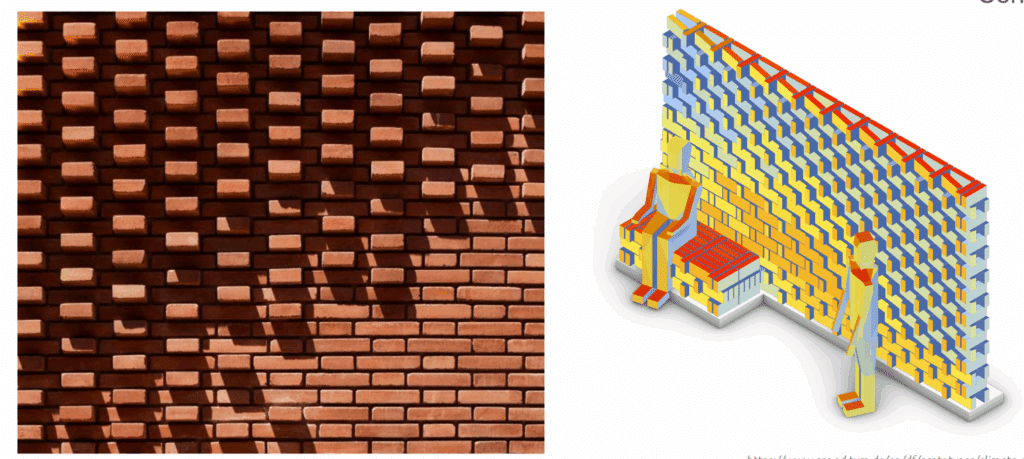
The project looked into possibilities for improving the local microclimate in urban areas by creating self-shaded building facades with reduced solar exposure. They investigated whether they can apply digital design and robotic fabrication technology to improve the exterior facades of buildings directly. The project aimed at integrating the potentials of computational design, climate simulation and robotic fabrication with the activation of climate-active properties of bricks in building envelopes.
This prototype of the concept was produced in collaboration with students at 1:1 scale at the Kreativ Quartier in Munich.
We explored whether the creation of customized site-specific self-shading effects in the external facades of buildings can reduce solar exposure and thus decrease the storing and radiation of heat to improve the ambient climate in urban areas
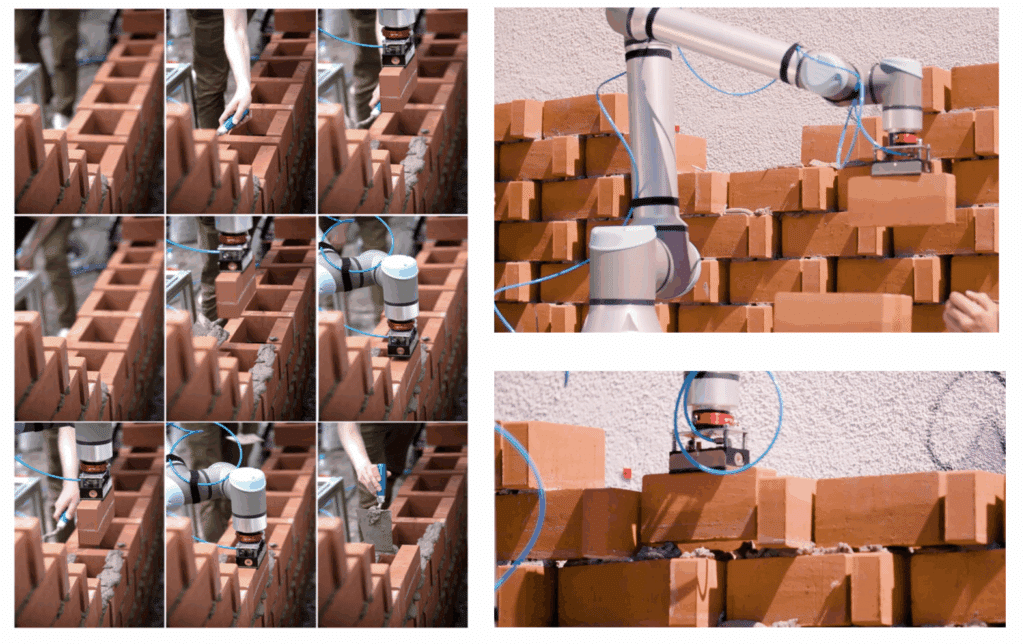
Reference for scanning
THE USAGE OF TLS AND PHOTOGRAMMETRY DURING THE RESTORATION PROCESS OF SPANISH NATIONAL Monument

- Assessing built heritage due to their ability to handle complex and irregular architectural forms.
Photogrammetry
- Photogrammetry is employed to collect and represent data visually. This method is particularly useful for documenting the geometry and construction systems of the building, especially in areas that are difficult to access, such as extrados of the vaults.
Research Question
How can robotic fabrication create a parametric second-skin façade system that optimizes solar radiation mitigation through dynamic brick laying with computational design?
Methodology
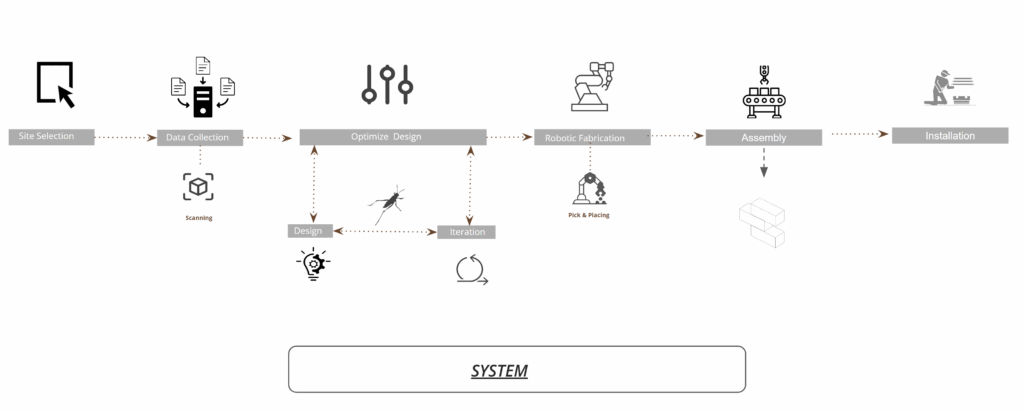
Site Selection Processing
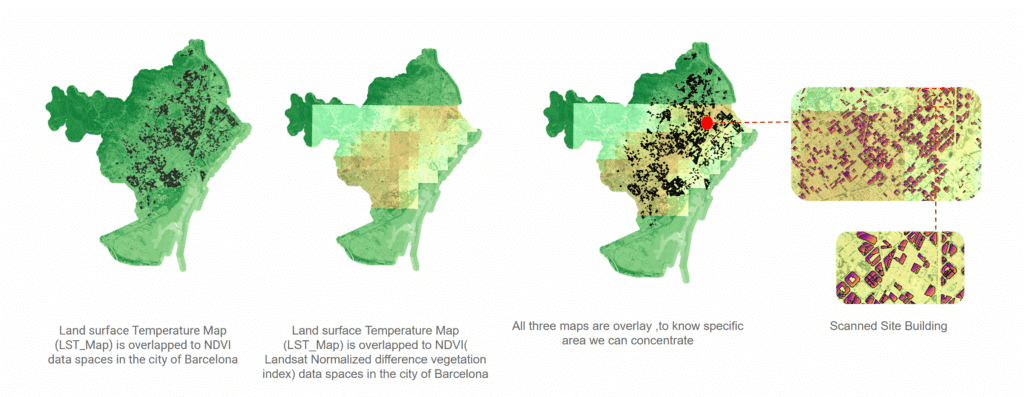
Data Collection
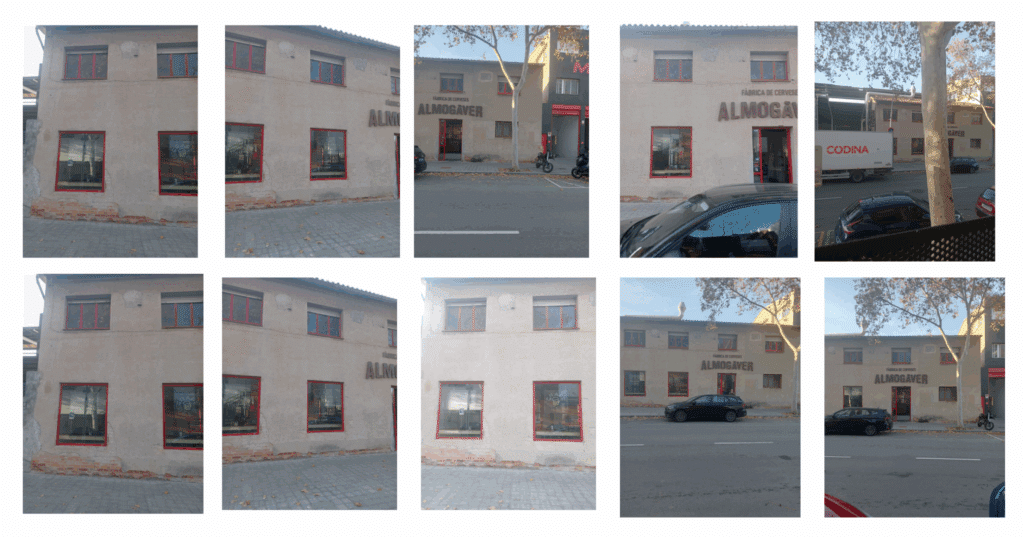
After selecting the site, I took detailed photos and conducted a photogrammetry scan to create an accurate 3D model. This process helped in understanding the site’s geometry and conditions, enabling informed decisions for designing parametric functional facades using construction waste
Data Processing
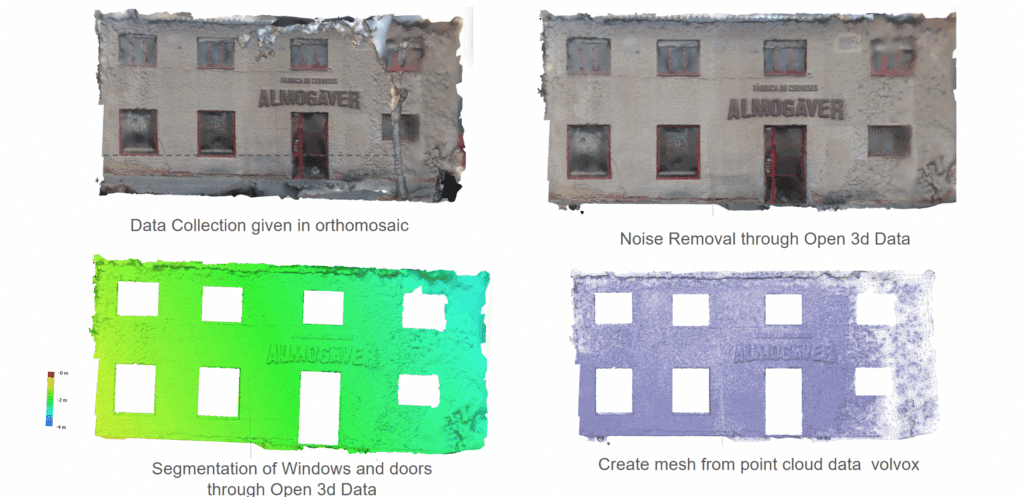
Solar Radiation Impact
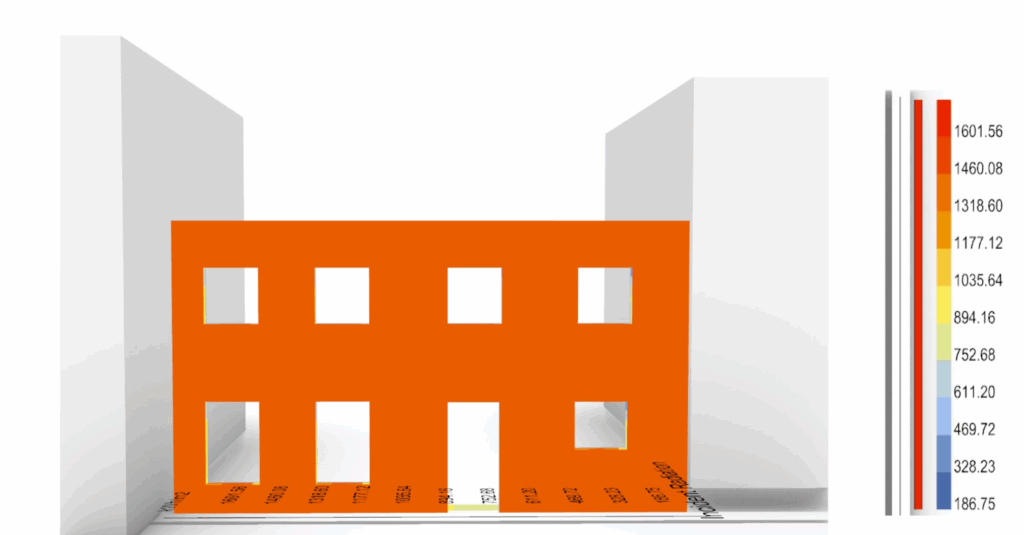
The site’s intense solar impact necessitates a second skin to mitigate heat, enhance thermal comfort, and reduce energy consumption. This layer provides shading, promotes sustainability, and supports a more comfortable urban environment by addressing excessive solar exposure.First, test with brick like blocks as they require less material.
Design Solar Simulation Design
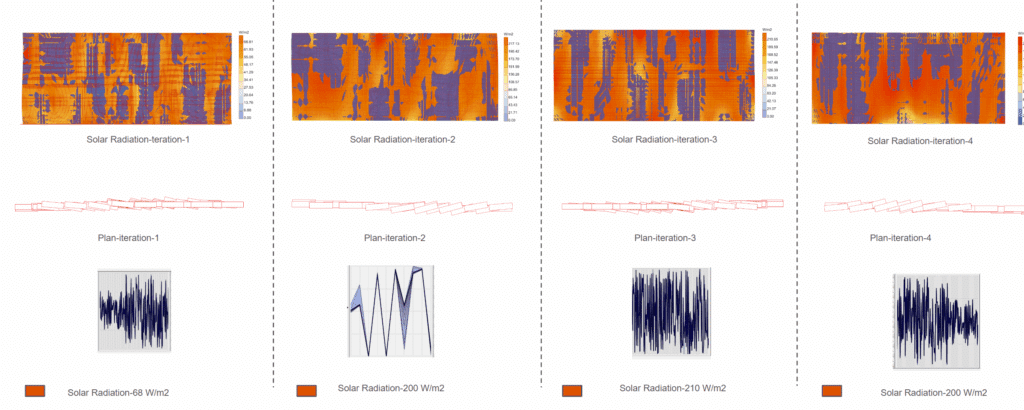
Comparative Analysis
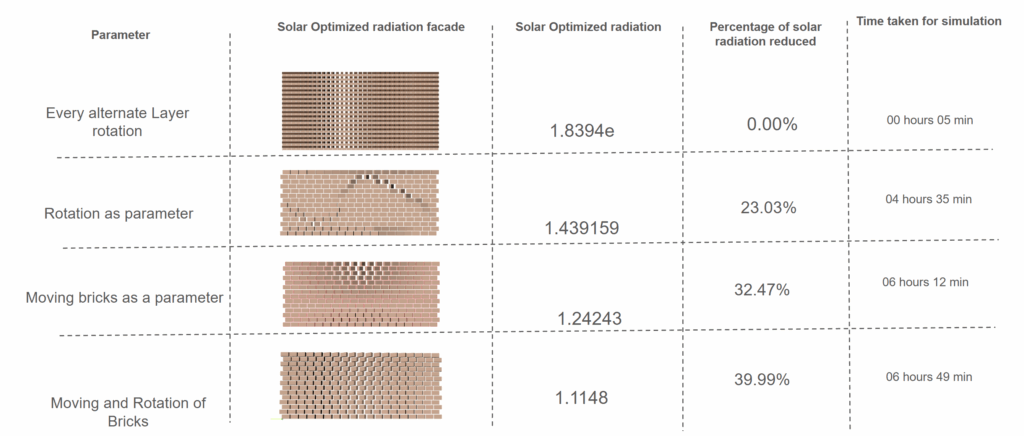
Design

designing a facade by positioning bricks based on solar radiation points, incorporating rotation as a parameter influenced by solar exposure. Utilizing Galapagos for optimization, I derive an optimized configuration. This result informs the facade design, which is then divided into modular units. The modules adapt brick sizes for horizontal installation, ensuring a responsive and efficient facade system that balances aesthetic intent with environmental performance, aligning with solar radiation data for enhanced sustainability and functionality.
Layered Bricks
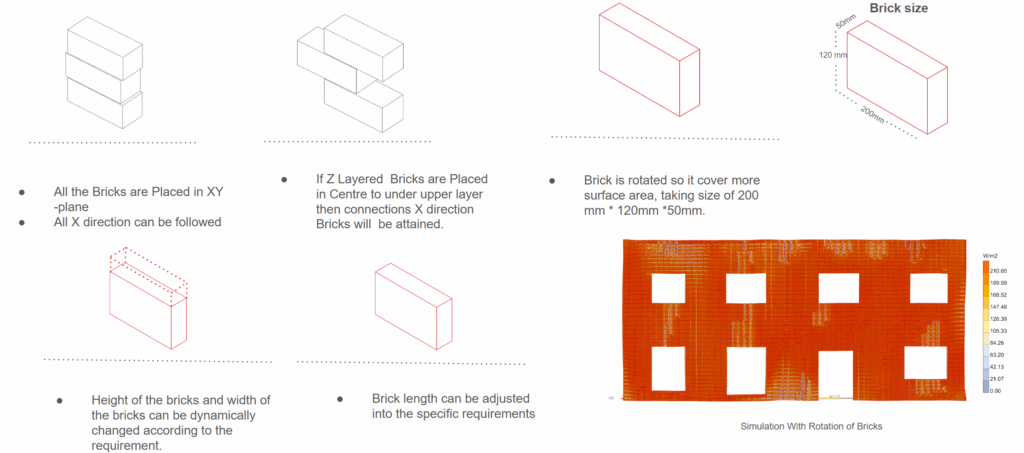
Assembly details
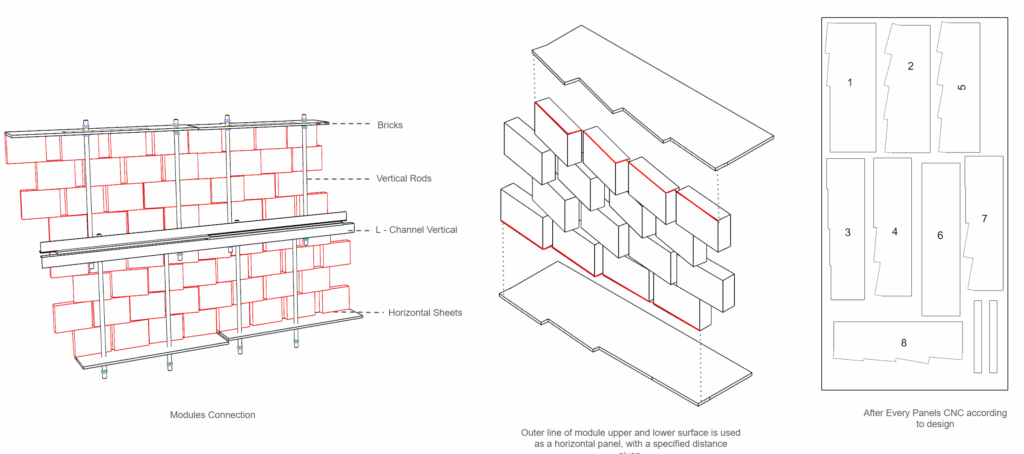
Assembly
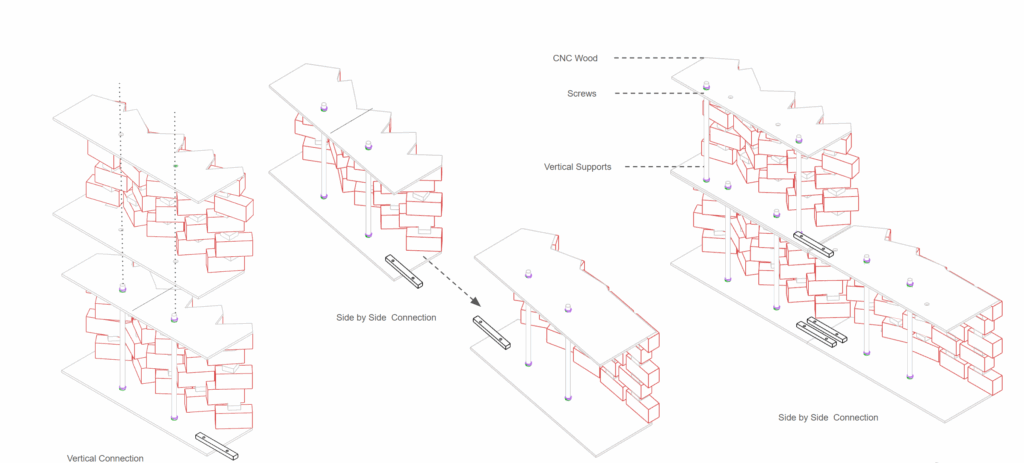
Assembly to Site
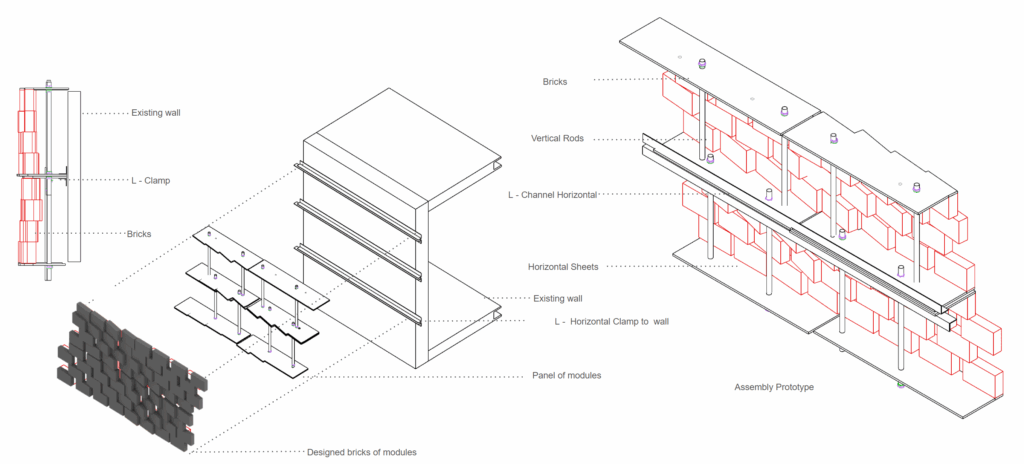
Prototype
